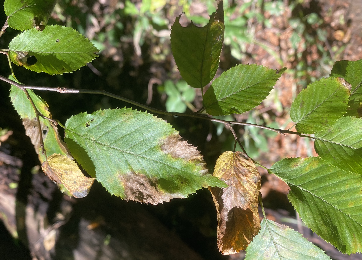

Here are 3 invasive species that already exist in the East Greenbush Town Park.

Japanese barberry is an invasive species throughout the northeastern U.S. that grows between 3 to 6 feet. It grows well in full sun to deep shade and takes sunlight away from native plants and trees. It provides a haven for ticks that carry the bacteria responsible for Lyme disease. This bush also causes abnormal soil erosion which leads to an increase in invasive earthworms.

 Poison Hemlock
Poison HemlockPoison hemlock is toxic to humans and animals if ingested. Symptoms appear from 20 minutes and up to three hours later. Humans can experience dilation of the pupils, dizziness, and trembling followed by slowing of the heartbeat, paralysis of the central nervous system, muscle paralysis, and death due to respiratory failure while animals will suffer from nervous trembling, salivation, lack of coordination, pupil dilation, rapid weak pulse, respiratory paralysis, coma, and sometimes death. If there is any chance that you have ingested this plant, contact 911 immediately as the poison is fast acting. There is treatment that will reverse the effects, and typically there won’t be any lingering aftereffects. Please note that ALL parts of the plant are poisonous, and the dead canes stay toxic for up to three years.

Beech leaf disease (BLD) is a relatively new disease that can kill both native and ornamental beech tree species. It is associated with a nematode, Litylenchus crenatae mccannii that disturbs the process of photosynthesis, which can kill mature trees in 6-10 years. Symptoms of BLD include dark green striped bands between the leaves veins, reduced leaf size and leaf curling. As symptoms progress, there's reduced leaf production, premature leaf dropping and an overall reduction in canopy cover.
| E-mail: brennasambrook@gmail.com |
| Please send any questions or comments |